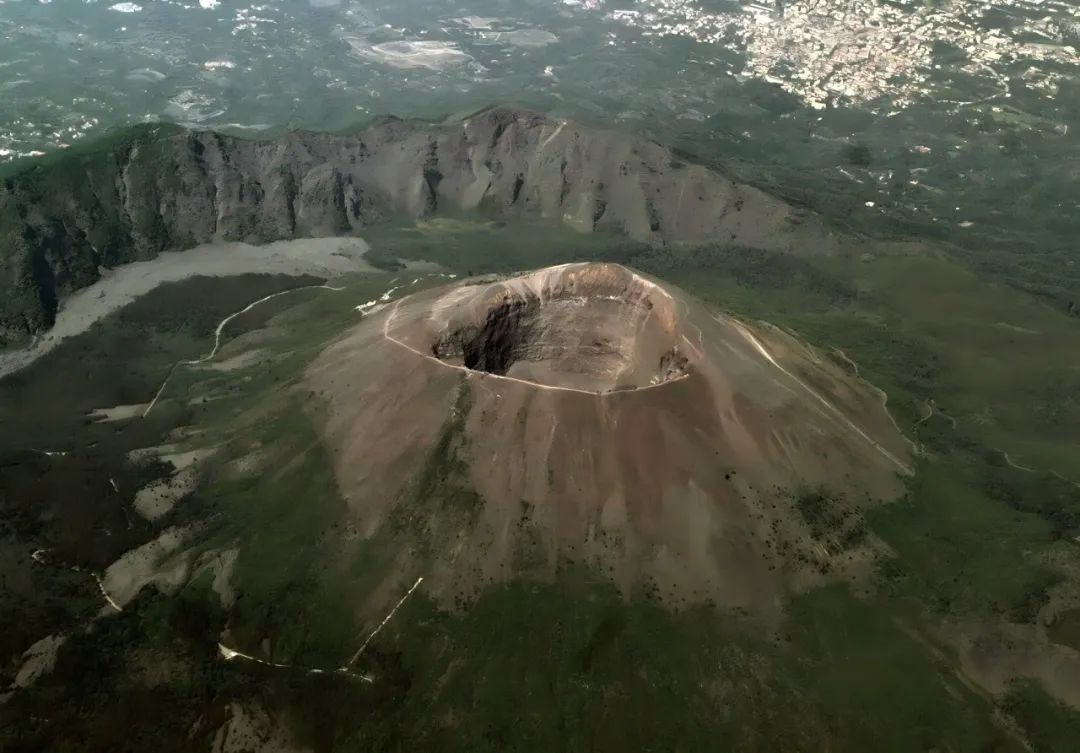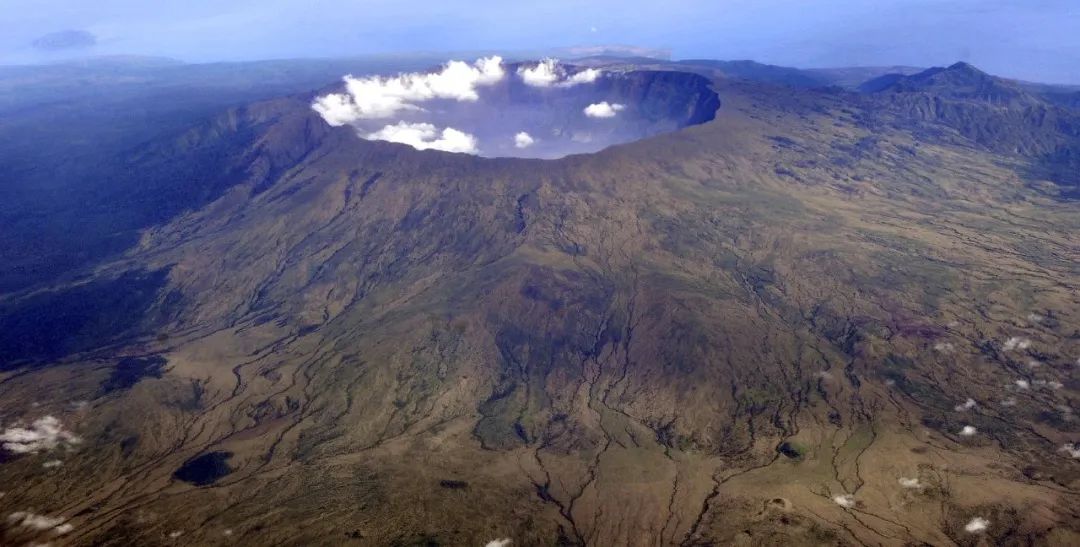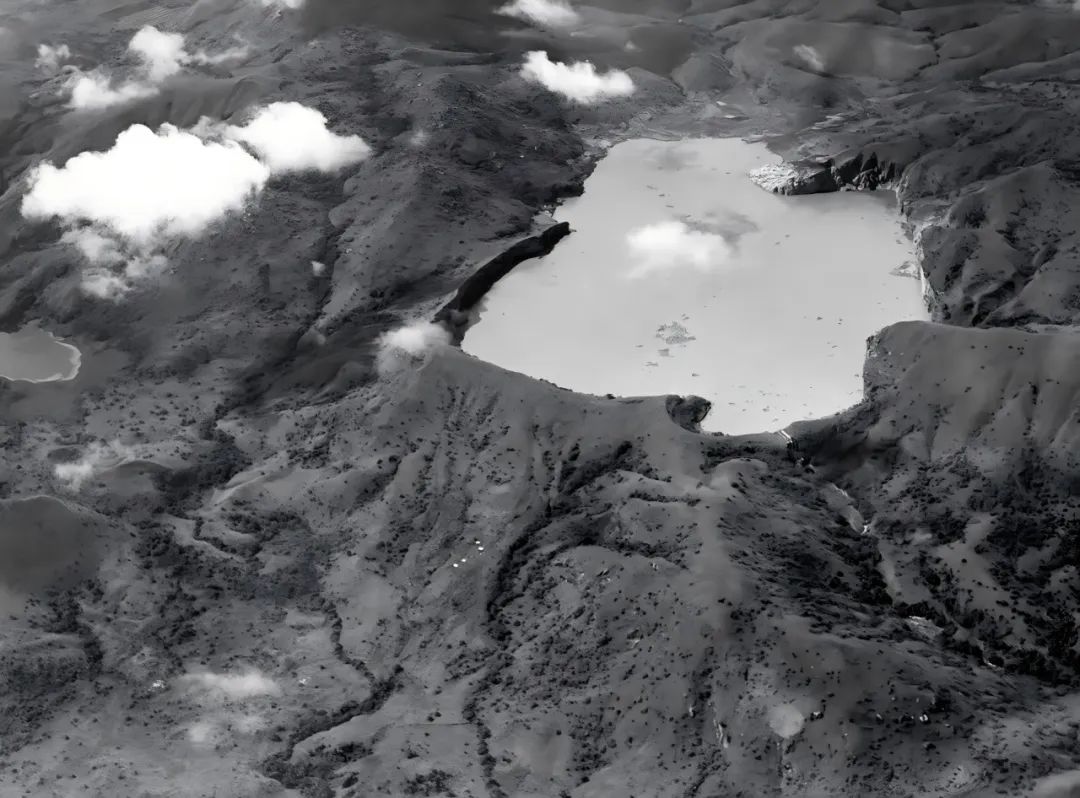WSC Weekly2025世界学者杯the World Scholar's Cup
@WSC小学者们!Jerry喊你来看
WSC Weekly专栏啦!
2025年度主题:重燃未来
Reigniting the Future
WSC Weekly专栏将精选最新话题内容
助力小学者准备世界学者杯!
让我们怀着
永恒的学术精神与信念
探索未来的无限可能吧!
锁定每周WSC Weekly
上期回顾&Quiz答案揭晓
在2025年世界学者杯第13期WSC Weekly栏目中,我们与小学者一起了解了AI艺术家。在上期的趣味Quiz中,你是否找到了正确答案?现在就让我们一起来揭晓吧!
人工智能拥有创造力吗?
Can AI be truly creative?
第13期Quiz答案揭晓:
What is the best description of the artworkThe Portrait of Edmond de Belamy?对艺术作品《埃德蒙·德·贝拉米的肖像》最恰当的描述是什么?
A. emotional 有感染力的
B. revolutional 变革的
C. obsolete 过时的
D. combinational 组合性的
E. collapsed 崩塌的
正确答案:D
Key: D
2025年第14期
Weekly Intro
火山就像沉睡的猛兽,表面平静,一旦苏醒,可能将造成毁灭性伤害。火山喷发有什么预兆吗?什么条件下火山可以复苏?本期 Weekly,让我们一起走近火山探险!
2025 No.14
如何唤醒一座休眠火山?
How to awake a dormant volcano?
唤醒火山
火山可能沉睡几十年、几百年,甚至几千年,从而给周围社区带来一种虚假的安全感。但“休眠”并不等于“死亡”,正如历史所示,沉寂的火山也可能以毁灭性的力量突然复苏。这些“沉睡的巨人”何时、为何会重新喷发?下面我们会通过几个著名案例来了解休眠火山的苏醒和再次喷发背后的科学原理。我们将看到,火山的“沉睡”状态只是表象,地下的地质活动从未停止,岩浆的积聚、压力的上升、地震的扰动、气体的积累,都可能成为火山复苏的前奏。
Volcanoes can slumber for decades, centuries, or even millennia, giving nearby communities a false sense of security. But "dormant" doesn't mean dead – as history shows, a quiescent volcano can roar back to life with devastating force.What causes these sleeping giants to reawaken?From ancient Mount Vesuvius to Yellowstone, we'll explore when and why dormant volcanoes erupt again, illustrating the science through famous case studies.We will see that under the appearance of "sleeping" volcanoes, the underground geological activity never stops, and the accumulation of magma, the rise in pressure, the disturbance of earthquakes, and the accumulation of gases may all be the prelude to the resurgence of the volcano.
维苏威火山:沉睡后的怒火

位于意大利那不勒斯湾的维苏威火山教会了人们一个残酷的事实:火山的沉默是极具欺骗性的。在公元79年那场埋葬了庞贝和赫库兰尼姆的著名喷发之前,维苏威火山已沉寂数百年。罗马帝国时期的居民根本没有火山爆发的记忆,他们将这座山视为生活背景的一部分。直到公元79年8月,维苏威毫无预警地喷发,火山灰与浮石倾泻而下,酿成历史上最著名的火山灾难之一。几个世纪后,维苏威再次证明它并非只是一场历史记忆。在中世纪早期的几次小喷发后,火山再次沉寂。直到1631年12月,它突然“复活”。事实上,这次苏醒并非毫无征兆——在喷发前的六个月里,该地区持续出现地震,强度逐渐增强,表明岩浆正向地表上升。当喷发最终来临时,造成约3000人死亡,天空持续几天被黑暗笼罩。这种“长期沉寂 + 微妙预兆 + 突然爆发”的模式,逐渐成为维苏威的特征。1631年之后,维苏威进入了频繁喷发期,直到1944年再次沉睡至今。如今,平静的维苏威火山山脚下仍生活着数百万人,但是我们需要时刻保持警惕,毕竟没人知道这位沉睡的杀手何时会再次觉醒。
Mount Vesuvius, towering above the Bay of Naples, has taught the world that dormancy can be deceiving.Before its infamous eruption in 79 C.E. that buried Pompeii and Herculaneum, Vesuvius had been quiet for centuries. Locals in the Roman Empire had no living memory of an eruption – they treated the mountain as just another backdrop to daily life. That all changed in August 79 C.E., when Vesuvius exploded without warning, raining ash and pumice over Roman towns in one of history's most iconic volcanic disasters. Centuries later, Vesuvius proved it wasn't a one-time terror. After a long lull following some early medieval eruptions, the volcano fell silent again. Then in December 1631, seemingly out of nowhere, it roared back to life. In truth, the reawakening wasn't entirely sudden – it was preceded by six months of persistent earthquakes that grew in intensity, signaling magma forcing its way upward. When the eruption finally hit, it killed around 3,000 people and darkened the skies for days.This pattern – long dormancy, subtle warning signs, then sudden fury – has defined Vesuvius's personality over time.After 1631, Vesuvius entered a period of frequent activity (erupting every few years) until 1944, when it went to sleep once more. Today, Vesuvius's "quiet" is unnerving; millions live around its slopes, mindful that history could repeat and the mountain could wake again at any time.
坦博拉火山:史上最强喷发

19世纪初,印尼的坦博拉火山看上去是一座郁郁葱葱、宁静祥和的山峰。当地居民并没有关于喷发的记载。事实上,在1815年之前,它已经休眠了数百年。长期沉睡期间,富含气体的岩浆在火山之下的密闭岩浆房中缓慢积聚。地质学家发现,岩浆在冷却结晶过程中,气体不断从岩浆中“析出”,导致岩浆房内部压力不断上升,最终达到惊人的水平(相当于数千巴压力),使得整个火山如同一个即将爆炸的高压锅。1815年4月,坦博拉火山终于爆发。这场喷发是人类有记录以来最猛烈的一次。爆炸声传至近2000公里外,火山碎屑流摧毁了松巴哇岛上的多个村庄,导致约一万人直接丧生。更广泛的灾难是全球范围内的“无夏之年”:火山灰遮天蔽日,引发农作物歉收和饥荒,造成数万人死亡。
By the early 1800s, the Indonesian volcano Mount Tambora was an impressive, forest-covered mountain – and seemingly harmless.Locals had no records of recent eruptions. In reality, Tambora had been dormant for several centuries prior to 1815. During its long sleep, magma rich in dissolved gases slowly pooled in a closed-off chamber beneath the mountain. Geologists now understand that Tambora's magma chamber was cooling and crystallizing over the centuries of inactivity, which actually increased the pressure inside. Gases exsolved (came out of solution) from the cooling magma, over-pressurizing the chamber to astonishing levels (on the order of thousands of bars of pressure). The volcano was essentially a giant pressure cooker waiting to burst. In April 1815, the mountain literally blew its top. The eruption was one of the most explosive in recorded history.The explosion was heard nearly 2,000 miles away and unleashed pyroclastic flows that wiped out communities on Sumbawa island.Around 10,000 people died directly, and tens of thousands more perished as the ash fall led to crop failures and famine across the globe in the "Year Without a Summer".
尼奥斯湖:喀麦隆的沉默杀手

并非所有的火山复苏都伴随着火焰和熔岩。尼奥斯湖是喀麦隆一座深水火山口湖,曾安静地存在了数百年,直到1986年一个不祥的夜晚。湖面突然喷出致命气体云,造成附近村庄1700余人死亡。这并非岩浆喷发,而是一种“湖底喷气”现象:来自地底火山岩的二氧化碳逐渐溶解积聚在湖底。尼奥斯湖成了一个潜在的“二氧化碳炸弹”。1986年8月21日,某种扰动(如山体滑坡、小地震或火山活动)打破了湖水的分层稳定,导致底部高压的 CO₂ 突然释放,形成一团看不见的致命气云。由于二氧化碳比空气重,这团气体沿山坡缓慢下沉,悄无声息地夺去了人和动物的生命。
Not all volcanic reawakenings involve fire and lava.Lake Nyos, a deep crater lake in Cameroon, sat peacefully for centuries – until one eerie night in 1986. Without warning, the lake erupted a lethal cloud of gas that killed over 1,700 people in nearby villages.This wasn't a magma eruption but a limnic eruption: carbon dioxide gas, which had been seeping from underlying volcanic rocks, silently accumulated in the lake's bottom waters over time.Lake Nyos became a ticking time bomb of dissolved CO₂. On August 21, 1986, something triggered the lake's stratified layers to overturn. Scientists suspect a landslide into the lake or possibly a small earthquake or volcanic burp disturbed the water. This disturbance allowed the pressurized CO₂ at the bottom to suddenly degass. In an instant, tons of gas burst out of solution, rising to the surface and forming an invisible cloud. Carbon dioxide is heavier than air, so this cloud crept downhill into populated valleys, silently suffocating people and animals in its path.
喀拉喀托火山:炸裂的“死”岛

喀拉喀托是巽他海峡的一座小型火山岛。喀拉喀托19世纪前的上一次喷发是在1680年,那次喷发规模中等,之后便沉寂下来。到了19世纪80年代,两个多世纪的沉默让人们误以为这座火山已经“死亡”。然而,这一切在1883年5月开始发生变化。几周内,喀拉喀托火山时而活跃,时而平静。直到8月26日至27日,它的爆发成为了人类历史上记录到的最猛烈的火山喷发之一。一连串威力逐渐增强的爆炸最终引发了一次毁灭性的大爆发,整座岛屿几乎被炸成碎片。大部分岛体崩塌沉入海中,引发超过30米高的海啸,席卷沿岸,造成逾3.6万人死亡。是什么引发了这场在沉睡两个世纪之后的灾难?科学家认为,印度尼西亚板块俯冲带下方新岩浆的上涌重新激活了火山。水也可能在其中起了决定性作用:由于喀拉喀托部分处于海下,当炽热岩浆与海水接触时,海水瞬间汽化为高压蒸汽,从而大大增强了喷发的爆炸力。
Krakatoa is a small island volcano in the Sunda Strait. Before the 19th century, Krakatoa had last erupted in 1680, a moderate event, and then fallen silent. By the 1880s, over two centuries of dormancy had lulled everyone into thinking Krakatoa was extinct. All that changed in May 1883. For a few weeks, Krakatoa's activity waxed and waned.Then, on August 26–27, 1883, it delivered one of the most violent eruptions ever documented.A series of increasingly powerful explosions culminated in a colossal blast that literally shattered the island. Most of Krakatoa collapsed into the sea, generating tsunamis over 100 feet high that devastated coastlines and killed more than 36,000 people. What triggered this nightmare after such a long sleep?Scientists believe fresh magma rising from the subduction zone under Indonesia re-energized the volcano. Critically, water may have played a role: as the erupting magma contacted seawater (Krakatoa sat partially underwater), it likely flash-boiled the water into steam, adding explosive force.
圣海伦斯火山:
百年“沉默”后的爆发

在20世纪初期,美国太平洋西北部的圣海伦斯火山被认为是一座美丽而宁静的山峰,自1850年代以来便再无动静,许多人以为它不会在有生之年再度活跃。但1980年3月,圣海伦斯开始出现地震群,显示岩浆正在上升。到了5月,山体北坡出现明显隆起,表明岩浆已逼近地表。1980年5月18日上午8:32,一场5.1级地震震中位于火山之下,导致整个北坡滑塌。这是人类记录中最大规模的山体滑坡。滑坡“拔掉了瓶塞”,释放了岩浆的巨大压力,随即引发了横向爆炸,摧毁了数十公里的森林。这次喷发造成57人死亡,景观满目疮痍。圣海伦斯的复苏源于板块构造(其位于俯冲带上方,岩浆不断供给)和百余年岩浆积聚。最后,一次地震便触发了山体崩塌与爆发。
For residents of the Pacific Northwest, Mount St. Helens was a beautiful, tranquil peak throughout the early 20th century. It hadn't caused trouble since the 1850s, and many assumed it wouldn't again in their lifetimes. In truth, Mount St. Helens had been dormant for 123 years until March 1980. In March 1980, swarms of small earthquakes shook the volcano, a clear signal that magma was rising. By May 1980, a bulge had grown on the mountain's north flank as magma pushed within. At 8:32 a.m. on May 18, a moderate 5.1-magnitude earthquake struck under St. Helens, and in an instant the volcano's northern side gave way. The entire flank collapsed in a massive landslide – the largest in recorded history – which in turn "uncorked" the pressurized magma inside. Freed of its confining rock, the magma exploded laterally. The result was a cataclysmic lateral blast that mowed down forests for miles. The 1980 eruption of Mount St. Helens killed 57 people and left a devastating landscape.The trigger for St. Helens' reactivation was the tectonic setting (the volcano sits above a subducting oceanic plate that supplies magma) combined with a century of magma accumulation after its last eruption. Once magma intruded shallowly, all it took was a seismic jolt to cause the mountain's flank to collapse, releasing the pressure.
黄石火山:沉睡的超级火山

当谈到休眠火山时,一个不得不提的案例是黄石超级火山。它位于美国黄石国家公园之下,是一个庞大的火山口。黄石最近一次大规模喷发是在约63.1万年前,在这之前还有约130万年和210万年前的两次超级喷发。由于间隔时间极长,人类文明尚未经历过黄石火山的喷发。在这些超级喷发之间,黄石也曾有数次较小的熔岩流活动,最近一次发生在约7万年前。自此以后,它几乎处于“沉眠”状态,尽管地表的间歇泉、温泉以及偶发地震仍暗示着岩浆在地底活动。那么黄石火山会如何苏醒?科学家认为,必须有大量新岩浆注入地下岩浆房,并伴随压力显著上升。现有探测数据显示,黄石地下岩浆房目前只有5–15%是熔融状态,其余已固化为岩石。这意味着现阶段甚至不足以引发喷发。目前,黄石依然沉睡,但科学家正持续监测,以警惕这位巨人的任何动静。
No discussion of dormant volcanoes would be complete without Yellowstone – the gigantic caldera beneath Yellowstone National Park in the United States. Yellowstone last experienced a truly colossal eruption about 631,000 years ago, and before that had two other super-eruptions (around 1.3 million and 2.1 million years ago).Such eruptions are so far apart that human civilization has never seen one.In between these super-blasts, Yellowstone has had many smaller lava flows; in fact, the most recent volcanic activity was a lava flow about 70,000 years ago. Since then, it has basically been dormant (in terms of eruptions). It's no wonder that Yellowstone is often called a "supervolcano sleeping under a peaceful landscape" – with its geysers, hot springs, and periodic earthquake swarms as the only hints of the magma below. What would trigger Yellowstone to reawaken? Scientists think it would require a significant influx of new magma into its vast underground chambers, along with a big increase in pressure.Currently, however, surveys show that the magma chamber beneath Yellowstone is only 5–15% molten – the rest has solidified into rock. This means right now there may not even be enough liquid magma to erupt.For now, Yellowstone's slumber continues, monitored closely by scientists for any sign of a stirring giant.
Weekly关键词 Key Words
►dormant volcano 休眠火山
►Mount Tambora 坦博拉火山
►Lake Nyos 尼奥斯湖
►Krakatoa 喀拉喀托火山
►Mount St. Helens 圣海伦斯火山
►Yellowstone 黄石火山
►Mount Vesuvius 维苏威火山
所属话题
# Much Excite, Much Ignite
相关阅读
https://fastercapital.com/topics/reawakening-of-inactive-volcanoes.html
Weekly FUN Quiz
相信现在你已经了解了“火山复苏的条件”!那就快来参与本期Weekly FUN Quiz👇,告诉老师你的答案吧!
Quiz
All of the following can cause a dormant volcano to erupt again EXCEPT
以下所有情况都可能导致休眠火山再次喷发,除了
A. increase in the temperature of soil 土壤温度上升
B. unstable tectonic conditions 不稳定的构造条件
C. influx of new magma 新岩浆涌入
D. the contact of magma and seawater 岩浆和海水接触
E. the accumulation of gases in the chamber 火山腔内气体积聚













